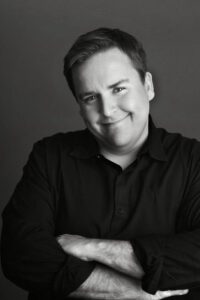This is the first in an occasional series of profiles introducing you to the people behind 23andMe’s content curation team. This team of 23andMe  scientists has the unique job of determining which genetic associations will be reported to customers. Their rigorous process of combing through scientific literature, vetting genetic information and ensuring that published scientific findings meet our standards for inclusion, directly impacts what you see when you log into your 23andMe account.
scientists has the unique job of determining which genetic associations will be reported to customers. Their rigorous process of combing through scientific literature, vetting genetic information and ensuring that published scientific findings meet our standards for inclusion, directly impacts what you see when you log into your 23andMe account.
“The genome is vast, complex, and full of wonders waiting to be revealed.”
How did you get into the field of genetics?
As a child I was always fascinated by stories of outer space, and thought my calling would be to design spaceships that would go to other planets. I enrolled in a program named “Engineering Science” at the University of Toronto that focuses on specialized engineering disciplines.
About midway through my second year I realized that Fluid Mechanics and Robotics were not nearly as fun as a class where we created beating cardiomyocytes out of stem cells, and the rest was history. I followed this up with a PhD in Neuroscience from the University of Miami, where I was permitted to tinker at the lab bench but also write the odd computer program. My thesis work centered on genetic mechanisms that allow peripheral nerves (e.g. in your arm) to grow back in contrast to central nerves (e.g. in your spinal cord), which cannot.
From: Toronto, Canada
Education:
BS: Biomedical Engineering,University of Toronto
PhD: Neuroscience from the University of Miami
Post-doc: UCSF in the lab of Nadav Ahituv
Fun Fact: After Graduate School Robin took a year off to help produce an indie feature film, ending up with his first (but hopefully not last) IMDB credit.
What were you researching/doing before you came to 23andMe?
After my PhD I did a postdoctoral fellowship at UCSF in the lab of Nadav Ahituv. We were interested in the 98 percent of the genome that doesn’t code for genes, so called DNA “dark matter”. It turns out that these regions of DNA are very important for telling genes when, where and how much to turn on to produce a living, breathing organism out of a single cell. My research focused on breaking apart these regions of DNA to figure out how they work.
Why are you excited about genetics and 23andMe?
So much about who we are and where we come from is wrapped up in this little ball of DNA that we carry about in (almost) every single one of our cells. It’s right there, glaring at us; and thanks to modern science, now extremely accessible. It’s like someone dropped a big puzzle in front of you that has an amazing image embedded within it. All you have to do is figure out how to put it together.
At 23andMe, we have the unique opportunity to be able to translate science to everyone — a lot of people just aren’t aware of what’s out there. Being able to work with one of the biggest databases of genetic information in the world is also very appealing. It’s allowed me to broaden my knowledge set about how genetics impact health and ancestry.
Tell us about one of your interesting findings at 23andMe, or in your previous scientific life.
In the past, determining whether a piece of dark matter DNA regulates gene expression required a series of lengthy procedures. My time at UCSF coincided with an advance in technology that allowed us to test thousands of such DNA pieces at the same time. My research, which was later published in the journal Nature Genetics, centered on the design of synthetic DNA sequences that mimicked natural DNA dark matter in an attempt to crack the “regulatory code”. We discovered several interesting features of the code that operates in liver cells, and that it resembles a grammar of sorts.
Tell us about a recent breakthrough in genetics research that you think will have a big impact on the industry.
We seem to be at an inflection point where advances in Next-Generation Sequencing put it in reach of the consumer. I’m looking forward to the day when we all have our full, sequenced genomes in our pockets (or safe in the cloud). The implications for health and ancestry are immense: imagine intricate knowledge about why your sense of smell is different that your partner’s, or being able to trace your ancestry back to a particular village. I think the best discoveries are out there waiting to be found.
Did you learn anything interesting from your 23andMe results? Did you make any changes as a result of taking the test?
I’ve learned a lot about the genetics of Hemochromatosis. A lot of our customers (including my family) have variants in the HFE gene, but only certain combinations lead to a risk for iron overload. I’m a carrier for H63D, which originally concerned me, but reading through the 23andMe report and also seeing all the various mutations that appeared in my family was helpful in putting this into perspective.
What’s one thing the average consumer should know about genetics?
There’s an amazing wealth of knowledge that scientists have built up over the years about how genetics influence traits and disease, but really we’ve just seen the tip of the iceberg. The genome is vast, complex, and full of wonders waiting to be revealed.



